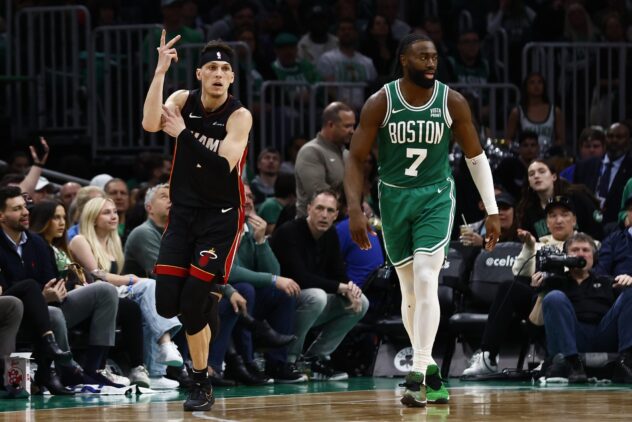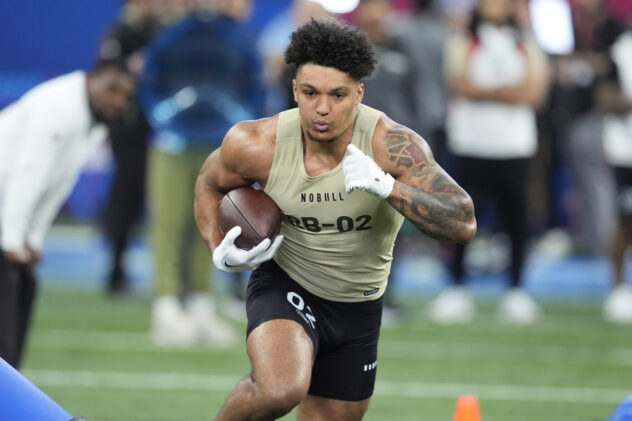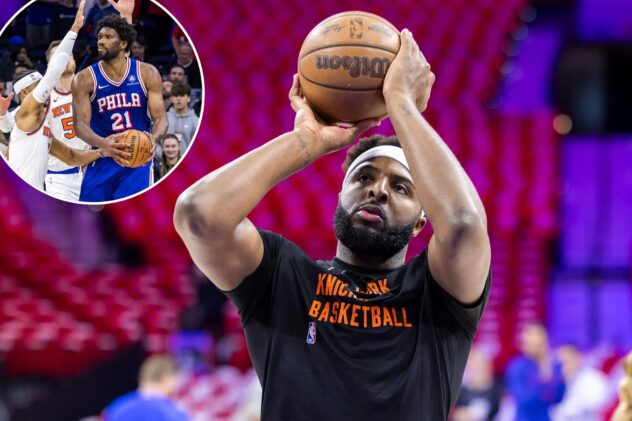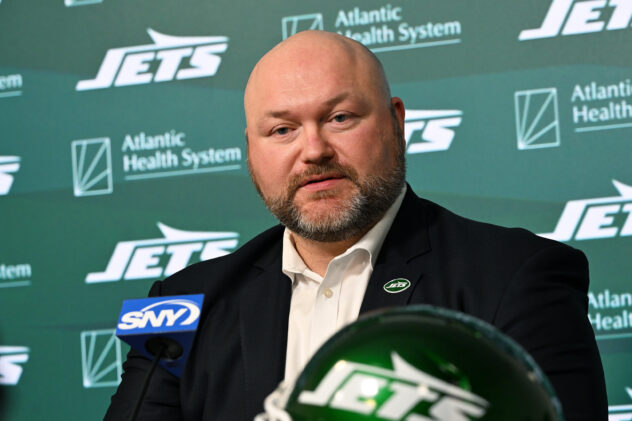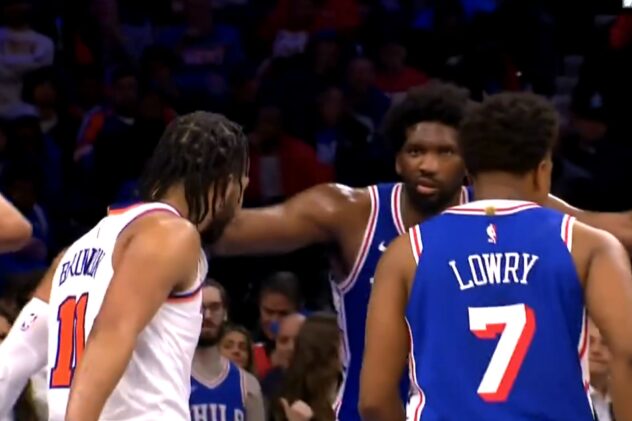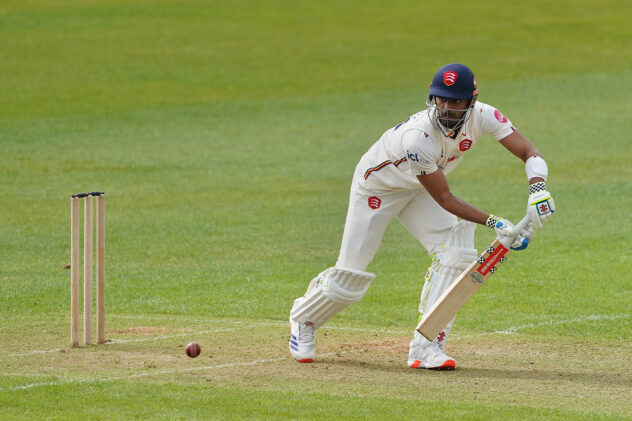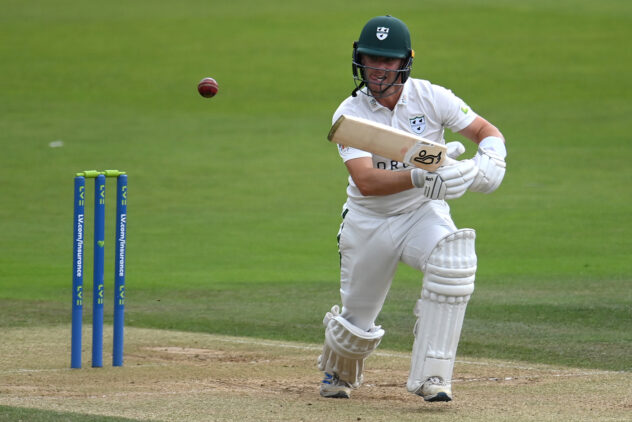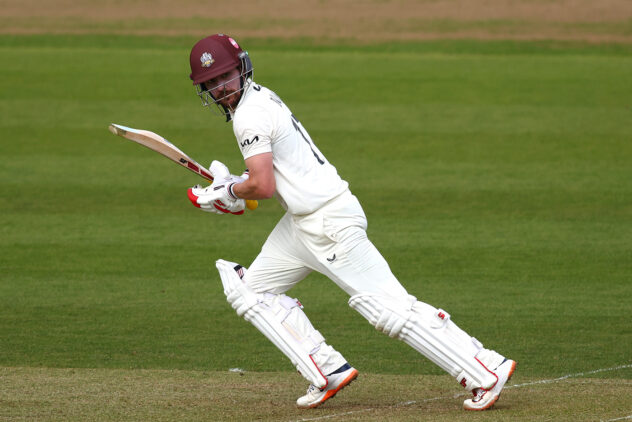Zion Is Looking More Like Zion. And the Pelicans Are Looking More Like Contenders.
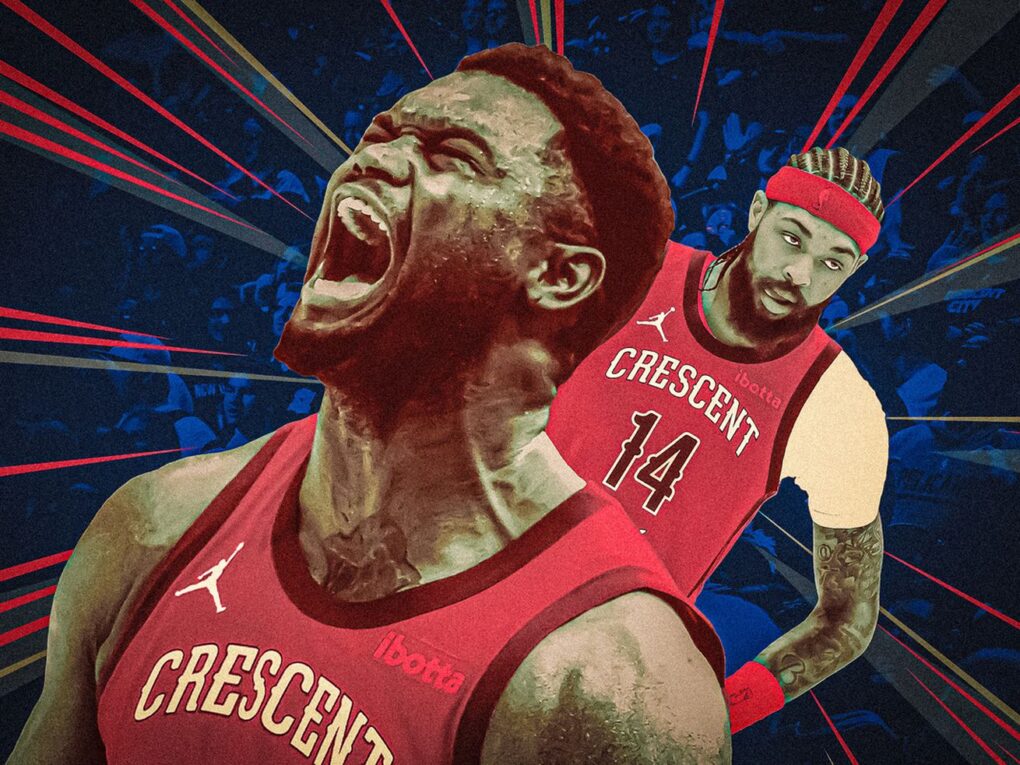
New Orleans has quietly been one of the NBA’s best teams in 2024, riding its defense, depth, and indomitable star up the Western Conference standings. But is that formula sustainable, and can it survive in the playoffs?
Watching Zion Williamson lately, you wonder whether he’s privy to something developing within him. The blocks—seven in the past three games—are starting to look familiar: the suddenness, the sheer force, the audacity. There is a certain athletic vulnerability that Zion displays every time he hurtles his massive 6-foot-6, 284-pound frame into the air. It’s been that way ever since he entered the NBA, after dissolving the concept of physics in his lone year at Duke, where he produced one of the greatest college basketball seasons ever. But after injuries and setbacks, fluctuations in conditioning and levels of trust in his own body, Zion is engaged in a public process of relearning himself. It’s a process that has now spanned nearly a half decade.
Some of Zion Williamson’s best blocks since returning from the All-Star break.
The bounce is back. pic.twitter.com/hlIOVjYphb
— Will Guillory (@WillGuillory) March 11, 2024
I wonder whether what Zion’s feeling now, as he steadily builds himself back up, is akin to something he’s felt before. No one but Zion can know what it felt like when he was 15, in the throes of a physical transformation that gave rise to the extraordinary build he has today—and the growing pains in his back and knees that would eventually subside, leaving him with a truly awesome gift. “Once the pain went away,” Williamson told The Charlotte Observer in 2016, “I picked up all this newfound athleticism. I don’t know where it came from. I just accepted it. Now, I had my ballhandling and size, and the power forwards and small forwards who tried to guard me, I could fly by them.”
These days, he’s inching nearer to that previous form. Close, but not quite. Regardless of whether Williamson ever regains full access to his athletic gifts, he’s demonstrated an understanding of what’s truly important in any relationship with staying power: It’s not about chasing highs and lows; it’s about finding consistency. Zion is on track to play a career-high number of games in a season. His raw scoring numbers are down, but the Pelicans have fully committed to the idea of Williamson as a primary initiator—he now boasts an assist percentage comparable to Damian Lillard’s. The numbers might not be as mind-numbing as they have been in the past, but—as evidenced by the Pelicans’ hot play of late and their top-three net rating in the NBA since the start of 2024—they haven’t had to be.
Now 39-25, the Pelicans have flown under the radar in part because their highest-profile stars have not been exceptional, but merely good. In a season largely defined by the rise of young cornerstones like Shai Gilgeous-Alexander, Tyrese Haliburton, and Anthony Edwards, Zion’s presence has been more ambient. Brandon Ingram, the team’s 1B, has seen an uptick in overall efficiency but a decline in scoring similar to Zion’s. Of course, that’s what happens when two stars actually play together. This is only the second time in five seasons that Williamson and Ingram have shared the court for more than 22 games.
The other part of the Pelicans’ relative anonymity has far more to do with the basketball-consuming public than the team. The Pelicans’ embarrassing 44-point loss to the Lakers in the in-season tournament semifinals left a bad impression—and in a regular season that can feel like 30 endless processions all running concurrently, those impressions can last longer than they ought to. Having spent most of the season memorialized in an unflattering snapshot, the Pelicans carry on in a sort of utopia within popular basketball consciousness—which is to say, in no place at all. (Reserve guard Jose Alvarado’s patented shadow ambushes aren’t just a feature of the Pelicans defense; they may as well define the team’s ethos as a whole.)
That is about to change. The Clippers have lost two straight games (and potentially have a compromised Kawhi Leonard, who left Tuesday’s game against the Timberwolves with back spasms), and the Pelicans are only two games behind L.A. for the 4-seed out West, with a conveniently scheduled game against them on Friday. For all of the acclaim that the Thunder and Wolves have garnered as the top young teams out West, the Pelicans have slowly but surely worked their way into that conversation. And they’ve done it in unique fashion.
It starts with defense—odd, given that neither of the team’s two best players carry sterling reputations on that end, despite their physical tools. But the Pelicans are colored by the margins, and wing stopper Herb Jones has arguably been the team’s most valuable and representative player. New Orleans wields Zion’s outlier explosiveness, fluidity, and body control to great effect; it has constructed a sandbox in the midrange for Ingram’s contested shotmaking talent; and yet it’s Jones’s pattern recognition that stands out as the single most impressive skill on the team. One-on-one in a stance, Herb approaches defense like a world-class fencer on the piste: with reactivity so crisp and instantaneous it registers as premonition. (What if a mirror reflected the horrors of your immediate future?) As a weakside helper, Jones conjures greatness from another realm of play. “Ed Reed was my favorite player,” he said of the archetypal NFL free safety. “I would watch his highlights all day. I think a lot of what he did was just belief in his instincts. Trusting that he would make plays when he’s gambling out on the field. And I just took that to the court. That was kind of saying to myself: If he could do that on the football field, why couldn’t I do that on a basketball court?”
Jones sets the tone, and even the stars fall into alignment. Williamson has not only regained some of his explosiveness (and the confidence to act on his instincts), but also maintained a level of defensive intent that he hasn’t shown since college. Ingram has found ways to impact defense with his length and by being in the right place at the right time—a tenet of winning basketball that he had to internalize abroad during his rocky stint on Team USA in last summer’s FIBA World Cup. Alvarado, Trey Murphy III, Naji Marshall, and Larry Nance Jr. (as well as second-year disciple Dyson Daniels, currently working his way back from a torn meniscus injury) all give the Pelicans an unmatched level of depth and playmaking on defense, which has allowed head coach Willie Green the confidence and sense of security to mix and match based on the tenor of the game. New Orleans’s various bench units, which stagger Zion and Ingram as offensive focal points, have been the bedrock of the team’s success. Depending on your perspective, that’s either a charming superpower or a peril that could rear its ugly head in a month’s time.
A strange paradox looms for the Pelicans as they head into the postseason. All of their best players are hitting their stride at the right time. Zion’s on-ball creation has ramped up since All-Star Weekend, and he’s getting all the reps he needs as the team’s lead initiator en route to his very first playoff run. Ingram’s tough shotmaking is among the best of his generation—something that becomes infinitely more valuable in a best-of-seven series. Jones is shooting 43.5 percent from 3 on the season and 53.6 percent since the new year. CJ McCollum has transitioned gracefully into an off-ball marksman to accommodate the growth of both Williamson and Ingram, hitting better than 40 percent on catch-and-shoot and pull-up 3s. Murphy has been an absolute flamethrower of late, drilling five 3s per game over his past seven games. New Orleans has mobile defenders, shooters, and players who do both. On paper, they have what it takes to surprise folks come mid-April. But the playoffs are where teams invariably turn toward Occam’s razor: Rotations shorten because ultimately, teams have to trust their best players to take them where they want to go. Can the Pelicans afford to do that?
The concept of the death lineup, popularized by the Steph Curry–era Warriors, has been a fortune-tilting trump card for some of the great teams of the past decade: It’s a five-player unit that maximizes the playmaking potential on the floor by replacing an innings-eating center in favor of a more dynamic presence on offense. Jonas Valanciunas has been a stalwart at the 5 spot for years, a trustworthy operator in the post with one of the best career defensive rebounding percentages in NBA history. But the space he takes up on offense (and is unable to make up for on defense) inhibits both Williamson and Ingram, which has been an unresolved tension for years. Green went so far as to start Nance instead of Valanciunas in the second half of Sunday’s game against the Atlanta Hawks in order to clear things up for his playmakers.
And then there’s the death lineup lever. Green has trotted out a lineup of Williamson, Ingram, McCollum, Jones, and Murphy in 14 games this season. It’s an intoxicating idea: Zion as a propulsive point-center, given all the space in the world by long and rangy players who can all, at the very worst, shoot at league-average rates. The spacing ought to be immaculate, and it often is. Problem is, it just hasn’t worked. That lineup has been outscored by 37.9 points per 100 possessions in the 27 minutes it’s played together. Not nearly long enough to mean anything, but underwhelming nonetheless—like meeting a B-list celebrity in an elevator. It’s a shame, but it makes sense when one of the team’s two best offensive players often ends up camped out in a corner away from the primary action. The Williamson-Ingram pick-and-roll has not been emphasized despite its considerable potential: Some of the most encouraging offensive plays from the Pelicans’ recent stretch have involved Zion zooming downhill with Ingram taking advantage of the defensive attention he himself garners as a sort of run-blocking wide receiver.
The final stretch of the season will prove instructive. It’ll have to. New Orleans can’t give up on figuring out its “best-five” lineup, if only to shorten the number of variables the coaching staff will have to juggle in a best-of-seven series. Like the two young teams ahead of New Orleans in the standings, a monumental pressure test awaits the Pelicans, who have yet to prove their worth in the Williamson-Ingram era. We’ll soon get our first glimpse of the matchup nightmare Zion could pose for playoff defenses—and how long he can hold up as teams attempt to break his newfound defensive spirit by forcing him into pick-and-roll situations. We’ll soon have a better sense of the long-term viability of the team’s two best players in tandem, and whether or not there is just too much overlap in where they prefer to attack from. But first, the Pelicans will have to survive the fourth-toughest remaining strength of schedule among playoff contenders: They are currently as close to home-court advantage as they are to the play-in. New Orleans has done what it’s needed to, building momentum by beating struggling teams into submission—can it keep that up in an upcoming home gauntlet against the Thunder, Bucks, Celtics, and Suns in late March, heading into April?
These are concerns to roll into tomorrow. For now, it’s enough just to watch a generational athlete play as freely as he has in years. To see him finally reach a level, a stage, that he hasn’t yet experienced. I’m thinking about something Zion said before the All-Star break. This is year five of him chasing his own shadow, literally trying to reach the heights he used to. We’ve all wondered the same thing: When, if ever, might we see that version of him again?
“The real Zion? I know we good to go when I’m like, not 100 [percent], but 110, 115,” Williamson said. “When I’m doing things that aren’t normal, constantly, that’s when I know I’m back to where I need to be. So I’d say I’m about, like, 93 [percent] right now.”
The Pelicans have forged one of the best teams in the league largely in the shadows, propped up by names and faces that more casual fans wouldn’t recognize. It’s a team that’s winning on both sides of variance from behind the arc—fifth in 3-point percentage and second in 3-point percentage allowed—and playing with an edge on defense that hones itself with each substitution made. There is a throne fit for a titan atop the foundation that the Pelicans have set. Fit for someone who, say, has another 20-odd percentage points of his former self left to claim. And, for the first time in a long time, it’s within reach.


